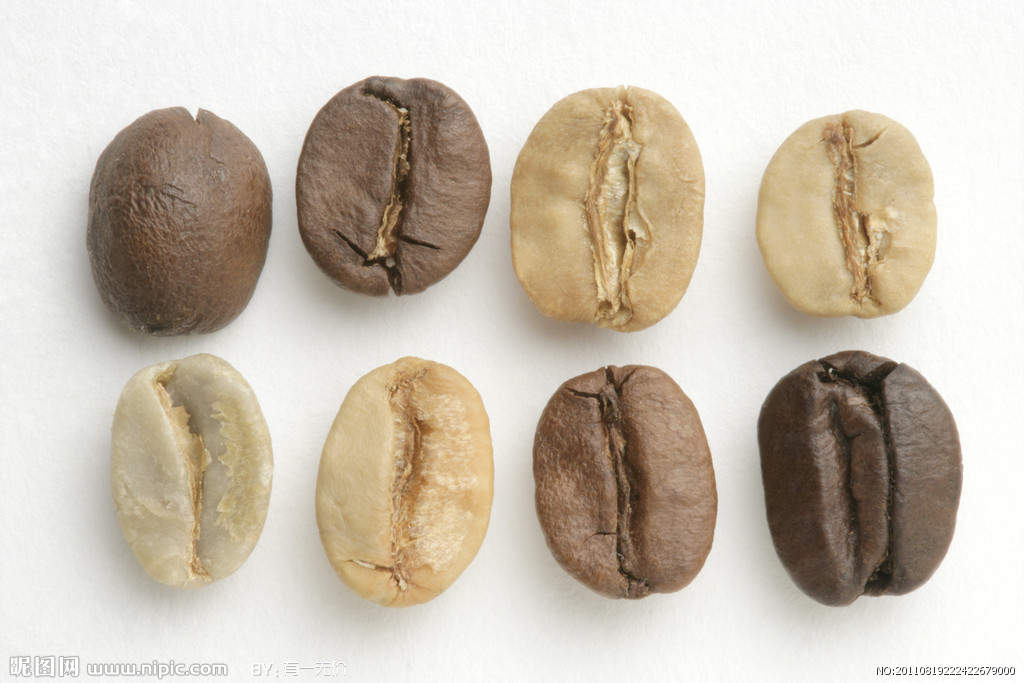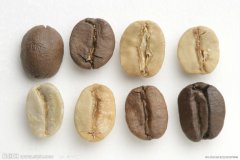Coffee scent bottle (coffee nose) instruction manual (No. 1-9 bottle) Chinese version

The nose-smelling bottle of 36-flavor coffee can be said to be one of the artifacts of coffee lovers. Many coffee players have a set to correct their sense of coffee smell and is an official auxiliary tool certified by Q-Grader coffee tasters. However, many domestic enthusiasts often put the very high-end instruction manual on the shelf after taking the incense bottle home, and the author is no exception. Until one day I looked at it and seemed to have discovered a new world: that's how the coffee nose was used!
But what is disturbing is that the whole article is written in English and there are a lot of technical terms, so it is really difficult for me, such as a Chinglish Speaker who barely passed CET-6, to use it directly. So I dared to throw a brick to attract jade and tried to start translating this Secret Book. I also hope that colleagues in the coffee industry will criticize and correct the omissions and biases.

1. Earth soil

Aroma type earthy flavor
Sample fragrance characteristics
It is a typical smell similar to that of fresh beet roots. It is quite appropriate to use Geosmine (from the Greek ge= soil, osme= smell) to reflect this flavor, it pervades the whole air, but the intensity is as subtle as ants.
Odor performance in Coffee
The smell of soil is the main smell of sun-dried beans. It is found in almost all robusta beans because Luodou is usually treated in the sun in this way. Luodou from Madagascar and the Central African Republic often peel off parchment to reduce the smell. Raw beans may also be brought into the local flavor during storage. Ethiopian coffee has three categories of soil flavor, from good to bad: black soil, red soil and lime soil. The Harrar region of Ethiopia also crushes Arabica beans on the ground, wets them and redried them to form the unique flavor of the soil.
Coffee tasting
You will be pleasantly surprised by the wet soil flavor of the top Robusta beans from Vietnam or India. When you are stunned by the earthy smell of coffee from Harrar and Sidamo in Ethiopia, please accept it (it's not defective). The earthy smell of elephant beans from El Salvador and coffee beans from Sigri, Papua New Guinea is less impressive.
2. Potato potatoes

Aroma type earthy smell, sulfur smell
Sample fragrance characteristics
Boiled potatoes. Even if it is sometimes mixed with other flavors, it is still very attractive. This special aroma comes from methylthio propionaldehyde formed during baking.
Odor performance in Coffee
Although it is not the dominant flavor, the potato flavor is still one of the common flavors in coffee. If a cup of coffee has a strong potato flavor, the beans have not been carefully selected. A certain degree of potato flavor will bring some personalized features to the coffee.
Coffee tasting
I noticed this potato aroma in the delicate and charming Costa Rican coffee, Colombian Tolima coffee and grass-scented Honduran coffee. I can also find potato flavor in some coffee from East Africa, especially from Zimbabwe, but it is not as prominent as coffee beans from Central America.
3. Gardenpeas pea

Aroma type green plant
Sample fragrance characteristics
Freshly shelled tender peas and pods. It is a delicate taste, completely different from the sweet and metallic taste of canned peas! The soil smell of fruits and vegetables in peas and coffee raw beans is derived from 2-methoxy-3-isopropylpiperazine, a compound that can be sensed by just a few drops in an Olympic-standard swimming pool.
Odor performance in Coffee
Peas are often smelled in raw or shallow baked beans, but become weaker and weaker as the baking deepens. It is clearer in dry fragrance than in wet incense, and seems to be more prominent in Arabica beans than robusta beans. It brings liveliness and vitality to the coffee flavor and is very important for balancing the overall flavor.
Coffee tasting
Among the Robota beans made in Brazil, the taste of peas is a little short. Robusta and Arabica beans made in Uganda are extremely prominent and easy to identify. It's quite obvious in Arabica beans in Guatemala.
4.Cucumber cucumber

Aroma type green plant
Sample fragrance characteristics
Ripe, crisp cucumber flavor. This fresh, high-quality smell comes from trans-2-nonenal, and other similar compounds often smell of melon, watermelon or fresh Pacific Oyster.
Odor performance in Coffee
The smell is typical, but not dominant. In the harvest period of raw beans, the performance is very lively, very fresh, after a period of time, it will still exist a little, but more into the woody taste.
Coffee tasting
I think cucumber is one of the most interesting flavors. It's obvious in Venezuelan Tachira beans, but I also find it more or less in other coffee, such as Brazil tanning Arabica, or in selected Colombian Valledupar beans with a very delicate degree. I have identified cucumber flavors in African beans, such as some Ethiopian mocha Limu beans and soft shallow baked Zaire beans, while Kenyan beans are more intense. If you can't smell the cucumber directly, don't lose heart, you can taste it in the aftertaste.
5 Straw rice straw
Aroma type plant, dried incense
Sample fragrance characteristics
The sharp aroma of the stalks of a rice crop left in the field after harvest. Similar to the warm botanical aroma of chopped hay. The sample bottle is the extract of hay.
Odor performance in Coffee
Some Indian beans are called "monsoon beans", which means that during the months of moist monsoon in the Indian Ocean, beans are carefully preserved in special warehouses, the beans will grow in size, show a beautiful golden yellow, and form a special sweet smell of straw. When the aroma is evenly distributed, it forms a distinctive and charming quality.
Coffee tasting
The smell of straw is one of the most perceptible smells. It is often found in many high-quality Brazilian mixed beans, which is also a subtle feature of Burundian beans. It can be skillfully mixed with cedar flavor in Ivorian Robota beans. It is also prominent in Kenyan Kital é beans and some Australian beans.
6 Cedar cedar
Aroma type wood
Sample fragrance characteristics
The charming, fresh, rustic aroma of untreated logs is also similar to the smell of pencil crumbs. In the sample bottle is the natural North African cedar essential oil.
Odor performance in Coffee
This delicate aroma is characteristic of some excellent coffee trees. It is never dominant, but it combines gracefully with other aromas to form a "bouquet". The harvest in the mature period will make the fragrance more prominent.
Coffee tasting
Please forgive me for taking the liberty of associating this aroma with the red wine of the finest Rothschild Delafite (the top estate in the Pauillac region). The cedar aroma in the coffee is the same as the strong and delicate aroma of this excellent red wine. I found this aroma in the mellow and fragrant Ugandan Drugar and Bugisu coffee and Ethiopian Limu coffee. It also exists finely in the best Guatemalan coffee and as a foil in Honduran coffee. The cedar aroma in the legendary Jamaican Blue Mountain Coffee is absolutely amazing. But the most gorgeous interpretation of it comes from the deep, smooth Hawaiian Kona coffee, like a well-dressed king.
7 Clove-like cloves
Aroma type pungent-sweet
Sample fragrance characteristics
This seductive and complex aroma is reminiscent of cloves, carnation, herbal cabinets, vanilla and smoked products. We used 4-ethane guaiacol as a reference sample because it is also abundant in coffee. It tastes stronger than eugenol, the source of flavor that we are familiar with in kitchens and dental clinics.
Odor performance in Coffee
It is a charming and unusual aroma. It is praised and sought after because of its delicacy, and the complex spice makes the flavor of coffee meaningful.
Coffee tasting
This flavor can be easily found in Burundian coffee beans and Arabica beans in Mexico and Guatemala, but especially in the precious Ethiopian Harrar mocha beans.
8 Pepper Pepper
Strong aroma type, turpentine
Sample fragrance characteristics
It is so strong and spicy that it has an almost metallic taste of pepper. This sample is made from hydrocarbon turpentine obtained by distilling freshly ground black pepper. Some of these compounds are also found in coffee.
Odor performance in Coffee
This "metal" flavor gives coffee a penetration and vitality, making it more enjoyable.
Coffee tasting
A lot of coffee has a hint of pepper, but I find this flavor abundant in Brazilian beans with a lively feeling. And I also noticed this flavor in the high-quality coffee beans of Zimbabwe in Africa.
9 Coriander seed coriander seed

Kinds of fragrance Flower fragrance-Xin
Sample fragrance characteristics
This is a dried cilantro seed flavor, consisting of Muscat grapes and red sandalwood flowers, distinct from fresh parsley (also commonly known as Greek parsley). This aroma comes from coriander alcohol, which is rich in coriander seeds and is also found in coffee.
Odor performance in Coffee
This aroma is dominant and its content is second only to another major compound.
Coffee tasting
This flavor can be clearly felt when sniffing and sipping Ethiopian Sidamo coffee. In the distinctive Salvadoran Pacamara coffee, it can also be combined with toast flavor.
Important Notice :
前街咖啡 FrontStreet Coffee has moved to new addredd:
FrontStreet Coffee Address: 315,Donghua East Road,GuangZhou
Tel:020 38364473
- Prev

Coffee scent bottle (coffee nose) instruction manual (No. 1-9 bottle) Chinese version
The nose-smelling bottle of 36-flavor coffee can be said to be one of the artifacts of coffee lovers. Many coffee players have a set to correct their sense of coffee smell and is an official auxiliary tool certified by Q-Grader coffee tasters. However, many domestic enthusiasts often put the very high-end instruction manual on the shelf after taking the incense bottle home, and the author is no exception. Straight
- Next

Aluminum alloy structure of HG one grinder professional heavy hand bean mill
It starts with a bean. The bean is crushed and hot water forced through. The results are sometimes good, sometimes bad, and sometimes wonderful. Were chasing something wonderful. In pursuit of wonderful weve gone back to the step between t
Related
- What is the Philharmonic pressure? How to use Philharmonic pressure to make delicious coffee
- Why does a hand grinder have more fine powder than an electric grinder?
- In addition to the hot mom, what is the difference between the versions of EK43 | ditting and Mahdi ek43?
- What kind of equipment do you need to make coffee by hand? Introduction to novice starter cooking equipment tools
- Espresso needs to be ground how thick and thin scale entry Italian Coffee Machine Bean Grinder investigation and Grinding course
- How much does it cost to open a small private cafe? How much does it cost to learn coffee? How to operate it?
- The difference between the flavor characteristics of hand-brewed coffee and coffee maker is hand-brewed coffee really better than coffee maker? Can I use a coffee machine to make coffee beans by hand?
- The difference between 01 and 02 of hario v60 filter cup what is the difference between 01 and 02 filter cup opening and cooking flavor
- What's the difference between the smart cup and the French kettle? Which is better, the French kettle or the Smart Cup?
- What's the difference between a smart cup and a V60 filter cup? The difference between the taste of smart cup and hand-brewed coffee

